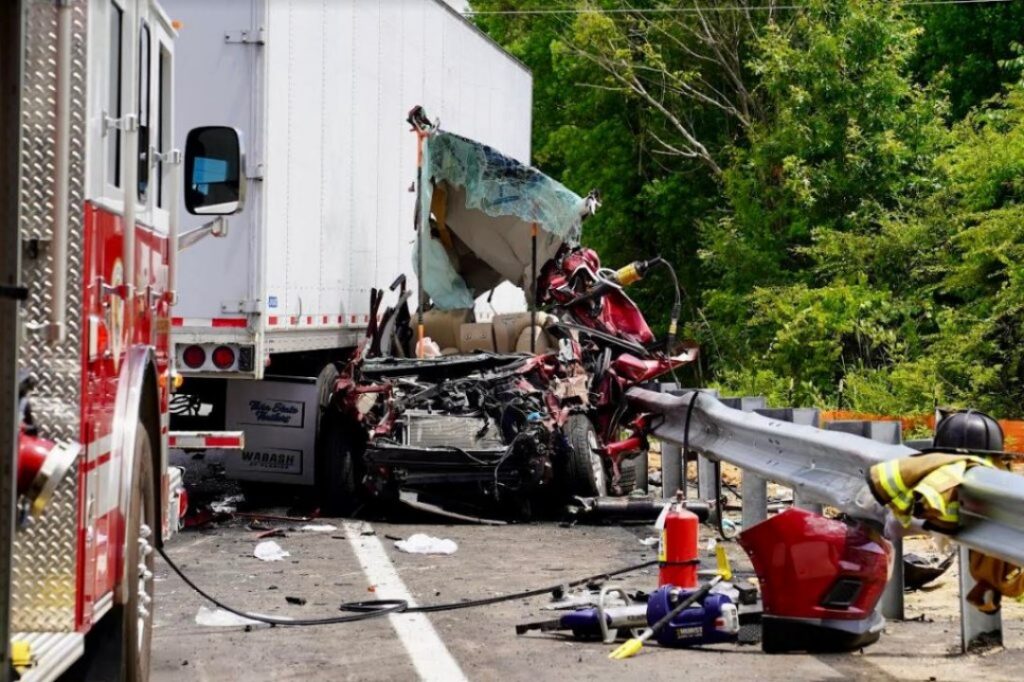Truck accidents represent some of the most devastating collisions on American roadways. When a 80,000-pound commercial vehicle collides with a passenger car weighing around 4,000 pounds, the physics are unforgiving. Understanding the potential financial compensation range—from minimum to maximum damages—is crucial for victims navigating the aftermath of these life-altering events.
Understanding Truck Accident Liability
Commercial trucking operates under strict federal regulations enforced by the Federal Motor Carrier Safety Administration (FMCSA). These regulations mandate minimum insurance requirements that far exceed those for passenger vehicles. For instance, trucks carrying non-hazardous freight must maintain at least $750,000 in liability coverage, while those transporting hazardous materials may require up to $5 million in coverage.
What makes truck accidents particularly complex is the potential for multiple liable parties. Beyond the driver, responsibility may extend to the trucking company, vehicle manufacturer, maintenance providers, cargo loaders, or even government entities responsible for road conditions. This web of potential liability directly impacts the damages available to victims.
Minimum Damages in Truck Accidents
At the lower end of the spectrum, minor truck accidents with minimal injuries might settle for as little as $900-$1,000. These typically involve minor vehicle damage, soft tissue injuries requiring minimal medical intervention, and little to no lost income. Such cases often settle quickly, sometimes without legal representation.
Insurance policy minimums create a baseline for potential compensation. While commercial trucks carry higher coverage, some smaller commercial vehicles might carry lower limits. Additionally, if the trucking company is underinsured or the accident involves an independent operator with minimal coverage, compensation may be limited to available insurance.
Minor injuries like whiplash, bruising, or small lacerations typically result in settlements covering medical expenses, minimal lost wages, and modest pain and suffering compensation. These cases rarely approach the policy limits of commercial carriers.
Average Settlement Ranges
National data suggests the average truck accident settlement falls between $100,000 and $150,000, though this figure varies widely based on numerous factors. An experienced Irvine truck accident attorney can help assess where your case falls on this spectrum, especially in situations involving moderate injuries requiring significant medical intervention but resulting in full recovery.
Settlements typically increase proportionally with injury severity. Broken bones, significant soft tissue damage, or injuries requiring surgery but without permanent disability often fall in the mid-range of potential compensation. These cases typically include more substantial non-economic damages for pain and suffering alongside concrete economic losses.
Regional variations significantly impact settlement amounts. Urban areas like Los Angeles or New York typically see higher settlements than rural regions due to increased medical costs, higher wages, and generally more plaintiff-friendly legal environments.
Maximum Damages in Catastrophic Cases
The upper limits of truck accident compensation can reach into the tens of millions of dollars. These cases involve catastrophic injuries such as traumatic brain injuries, spinal cord damage resulting in paralysis, severe burns, amputations, or wrongful death.
Factors driving maximum compensation include:
- Permanent disability requiring lifetime care
- Complete inability to return to work
- Significant pain and suffering
- Loss of quality of life
- Clear liability with egregious negligence
- Strong evidence of regulatory violations
Recent years have seen several record-setting verdicts, including a $411 million Florida verdict in 2019 for a victim who suffered catastrophic injuries when a truck driver fell asleep at the wheel. While such verdicts are exceptional, they demonstrate the potential upper limits in cases with devastating injuries and clear liability.
Types of Recoverable Damages
Economic damages form the foundation of truck accident compensation. These include quantifiable losses such as:
- Past and future medical expenses
- Lost wages and diminished earning capacity
- Property damage
- Rehabilitation costs
- Home modifications for accessibility
- In-home care expenses
Non-economic damages compensate for intangible losses that significantly impact quality of life:
- Physical pain and suffering
- Emotional distress and mental anguish
- Loss of enjoyment of life
- Loss of consortium (impact on relationships)
- Disfigurement and scarring
In cases involving particularly egregious behavior, punitive damages may be awarded. These are designed to punish the wrongdoer and deter similar conduct. For example, if a trucking company knowingly allowed drivers to falsify logbooks and exceed hours-of-service limitations, punitive damages might be appropriate.
Factors Affecting Settlement Amounts
Multiple factors influence where on the spectrum—from minimum to maximum—a particular case will fall:
Injury severity is the primary determinant. Temporary injuries resulting in full recovery typically receive lower compensation than permanent, life-altering injuries requiring ongoing care.
Liability determination significantly impacts potential recovery. In comparative negligence states, a victim’s compensation may be reduced by their percentage of fault. Clear, undisputed liability typically results in higher settlements than cases with shared responsibility.
Available insurance coverage creates practical limits on recovery. While verdicts may exceed policy limits, collecting beyond insurance often proves challenging unless the defendant has substantial assets.
The quality of evidence—including accident reconstruction, expert testimony, medical documentation, and witness statements—can dramatically influence settlement negotiations and trial outcomes.
The Settlement Process
Most truck accident cases resolve through settlement rather than trial. The timeline varies significantly, with minor cases potentially settling within months while complex, high-value cases may take years to resolve.
Effective negotiation strategies include thorough documentation of all damages, compelling presentation of liability evidence, and strategic timing of settlement demands. Experienced attorneys understand when to negotiate and when to prepare for trial to maximize potential recovery.
Expert witnesses often play crucial roles in establishing damages. Medical experts can testify about future care needs, economists can calculate lifetime earning losses, and accident reconstructionists can establish liability.
Conclusion
The range between minimum and maximum damages in truck accidents is vast—from a few thousand dollars to potentially tens of millions. This spectrum reflects the enormous variation in injury severity, liability circumstances, and long-term impacts these accidents create. In the most tragic cases, where a life is lost, working with an experienced Irvine wrongful death lawyer becomes essential to pursuing justice and appropriate compensation for surviving loved ones.
For victims navigating this complex landscape, understanding the factors that influence compensation is crucial. Proper legal representation from attorneys experienced in commercial vehicle litigation can make a significant difference in the ultimate outcome, ensuring that victims receive fair compensation proportionate to their injuries and losses.
While no amount of money can truly compensate for catastrophic injuries or the loss of a loved one, appropriate financial recovery provides crucial resources for medical care, financial stability, and the best possible quality of life following these devastating accidents.

